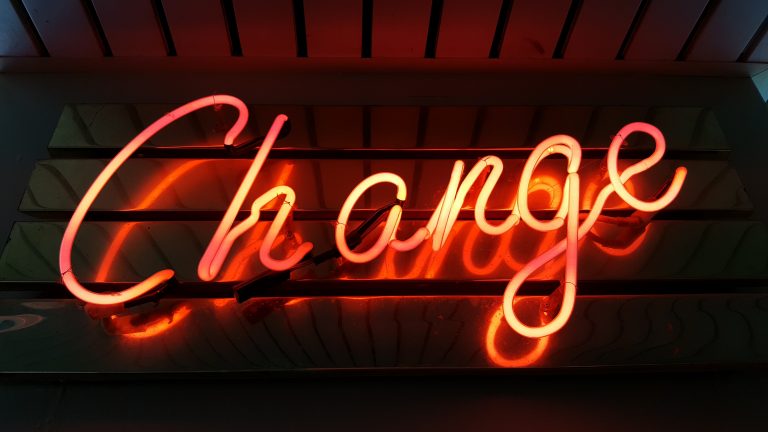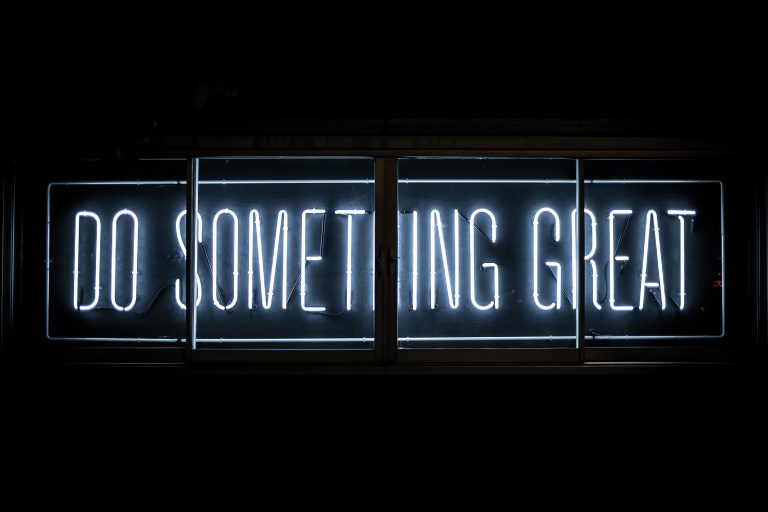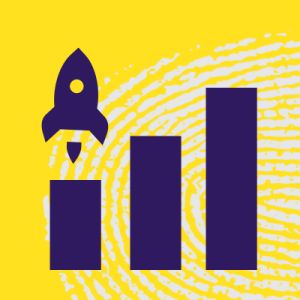This is the fourth part of a 6-part series on Inclusive Leadership by Marissa Ellis, Founder and CEO of Diversily. You can find out about the other planned articles here and how we can help with Inclusive Leadership development here.
Please share so that together we can create a better, more inclusive future for everyone.
Learning to think inclusively will profoundly change the way you see the world. It will change the actions you take and the decisions you make. Plus, once you start doing it, it is very difficult to go back. It is something that becomes intrinsically part of everything you do.
The business case for diversity and inclusion is solid. The research is conclusive — there are huge benefits to diverse and inclusive teams. Here are some examples:
- Leadership commitment to diversity and inclusion nearly doubles employee’s sense of inclusion and engagement (Bain Research).
- High levels of engagement increase profitability and productivity by 20% (Bain Research).
- All the data you need to put together the “business case” (Awaken).
Leaders in the future will need to have diversity and inclusion built into the way they operate.

“Whilst there is a wave of world’s momentum towards the creation of inclusive work culture, diversity and inclusion initiatives are still falling short. Leaders need to be comfortable being uncomfortable, having thoughts challenged, and embracing an environment that promotes, supports, and listens to all voices. Forming an inclusive culture is imperative to a successful business and society.”
Priya Guliani, Head of Operations, GBA-UK and WBAF Senator-UK
Emotional intelligence is a concept that is well understood. Leaders need emotional intelligence. But what about inclusive intelligence?
What does it mean for us to think inclusively?
Inclusion is one of these topics that gets talked about a lot, but we don’t always mean the same thing.
So, what does it mean to be an inclusive leader?
Remember my mantra from Part 1? Become myself. Lead everyone.
Inclusive leaders constantly ask this simple question.
‘Will this work for everyone?’
Invariably the answer is no. Often work is needed to think about the ‘other’, that is the ‘edge cases’ who can collectively often form the majority. This is how we make everyone feel welcome, valued and like they belong. This in turn creates a better experience, more opportunity and better results for everyone. This is how we get the real feedback and the true insights that help us create a future reality that is better for everyone.
Instead of asking ‘Why change?
We need to turn the question on its head.
We need to reframe it as ‘Why not change?’

If we can build this thinking into everyday practice, into people’s day jobs, then we start to change mind sets. We can get people challenging, rather than inviting microaggressions. If we target our people on what they have done to make their workplace more diverse or inclusive we will naturally drive progress. When you walk into a room, in a business context, where everyone looks the same, it should not feel like a familiar unquestionable norm, it should standout that this is something to be addressed. We need to acknowledge our knowledge gaps and proactively address them.
Forward thinking organisations are no longer asking ‘why?’ but exploring ‘how?’. These organisations need inclusive leaders to help them achieve their goals. Organisations are looking to grow inclusively, and they need people from all backgrounds who will support them on this journey. They need inclusive thinkers, and as the focus increases, everyone will need an inclusion story. For example, these are becoming common interview questions for leaders:
- What have you done to foster an inclusive culture?
- How have you demonstrated that you are an inclusive leader?
- How have you built diverse teams and fostered inclusion?
Historically organisations have engaged in bias training. But this has backfired in some cases as the white male majority felt that they were positioned as evil or to blame. It also isn’t very action orientated. Plus, often it is mandated which shifts the motivation and engagement of the participants.
I believe we need to take a different approach which is why Diversily have developed The Diversily Inclusive Leadership Workshop Series. We need to develop people’s inclusive thinking skills and shift minds to think in different ways. There are two key factors that drive real change.
The first is perspective taking. When people are able to see the world through other people’s eyes, they start to see inequalities they were blind to in the past and they start to question their role in driving change.
The second factor is action. People need tangible ideas for steps they can personally take. By focusing on these two key factors participants of our workshops emerge, not just with a new way of seeing the world but with concrete actions they can take.
The Diversily Inclusive Leadership model defines nine core behaviours that inspire inclusive action in terms of leading self, leading individuals and leading groups. We help to give people a common language and a way to self-assess themselves to identify areas to work on. It is hugely empowering and motivating to seed this kind of change.

Building inclusive workplaces, products and services is one of the most pressing challenges of our time. To do this we need inclusive thinkers leading the charge.
The important aspect is listening by seeking to understand vs. to be understood. An I&D ally’s words and actions must always be in sync. They can ensure the organization’s culture is continually underpinned by embracing diversity and respectful behaviours, encouraging two-way communication between leaders and employees.
Priya Guliani, Head of Operations, GBA-UK and WBAF Senator-UK
Historically communicating inside a company used to be about “spin” and “polish”. What leaders need now is authenticity, transparency, and a very clear way forward. People want to work in an environment where they are treated as human beings, not resources or numbers on a spreadsheet.
Once you become a leader. Your job is no longer to be great at doing the work. Your job is to serve the people who are doing the work. We get lots of training on how to do the work but not so much on leadership.
Leadership is a choice. It happens when someone steps up and causes a change to happen. It happens when someone enrols other people to help them make that change. Irrespective of your seniority or role you can influence the behaviour and attitudes of others around you and be a part of driving a transformational change for good.
How often do people in your team say things like ‘I am worried’. ‘I made a mistake’. ‘I need help’. ‘I don’t understand’. Then ask yourself, is it because they don’t feel these things or because they don’t feel safe sharing. Might sharing put a target on their head? The Google Aristotle project showed that phycological safely is the number one factor for great team work. If you want to increase performance you need to connect with people’s thoughts and feelings. You need to see people as individuals and you need to think inclusively.
Which of the following responses do you think will be likely to get the best result?
“Your performance was down last month. If you don’t step up in the next month I don’t think I’ll have much choice but to initiate a formal performance review.”
Or
“Your performance was down last month. How are you? Is everything ok?”
Our job as leaders is to help people to be at their natural best. Not to get the best out of them. Slave traders got the most out of their slaves. Your job is not to get every last drop at the expense of every other aspect in their lives. You are not a slave trader. You are a leader who understands how to create an environment where people will thrive.
What practical things can you do, tomorrow that will make a difference?
“I would start with the basic ground-level rules – listening and respecting each other regardless of relationship, hierarchy, technical competency, age, gender or race:
Respect other perspectives, opinions and contributions …
Listen to truly understand (not to respond!)
These qualities lead to fostering #diversityofthoughts and delivering richer outcomes; as well as opening access to the best #talent globally, maximising your #market reach anywhere in the world.”
Lana Tahirly Abdullayeva, Growth, Strategy and Innovation Advisor
It is important to think about diversity by design and inclusion with intent.
We need to get comfortable with the uncomfortable. We need to embrace and not back away from difficult conversations. Often the issues are buried and not confronted so people suffer in silence and eventually just leave.
Leaders need to be clear about what they expect from people and demonstrate role model behaviour.
This means standing up to and challenging bad behaviour. If microagreesssions are just accepted these will never change. Often people don’t know what microagressions are or recognise them in daily life. My top tip is to do a google search for ‘microagression’ and then flip to image view. You’ll soon get the idea!
It is also really important to find a ways to open the doors for feedback and make everyone feel responsible for inclusion. Curiosity and empathy are great traits to foster in your team to build great culture.

If you’d like to find ways to immediately add true value to your people and improve their personal and professional life, switch your thinking and your frame of mind and do the following.
- View your people as your own biggest success. Acknowledge and appreciate them and help them succeed in their career. Foster diverse talent and gain collective strength through difference.
- Leave your ego at the door and let your authentic self shine through, even if this involves sharing some of your vulnerabilities. Give away all of the credit — when things go well. Take the responsibility when things go wrong.
- Be a servant leader to your people. Know and empower everyone, giving them what they uniquely need to thrive.
As leaders we have to take responsibility for our own development, our thinking and our actions. We also have a responsibility to educate ourselves about the experiences and challenges of people who are not like us. We can’t expect to be spoon-fed and we have to proactively remove our own blind spots by broadening our perspectives. We have to assess situations that are unique to us and apply our knowledge and experience to find the right and relevant solutions. You can use The Diversily Inclusive Leadership Change Canvas to help you take charge of your own leadership development journey. You can download it for free here.
Remember, next time you are making a decision ask yourself this one question;
‘‘Will this work for everyone?’
Will it work for women, or people from ethnic minorities, or people of different religions, or people with disabilities or people of different ages, or people with caring responsibilities or people from LGBTQ communities or people not like me. Once you start thinking in this way you broaden your own perspectives and will start finding solutions that work better for everyone.
Stay tuned for Part 5 of this leadership series where we’ll explore why being an inclusive leader is so hard.
Please share so that together we can create a better, more inclusive future for everyone.
You can find out more about Diversily Inclusive Leadership development here. You’ll also be able to download the free Inclusive Leadership Change Canvas, which is an excellent discovery tool for self-reflection. Join our growing community of leaders by using The Change Canvas to build high performing inclusive teams and release potential.





